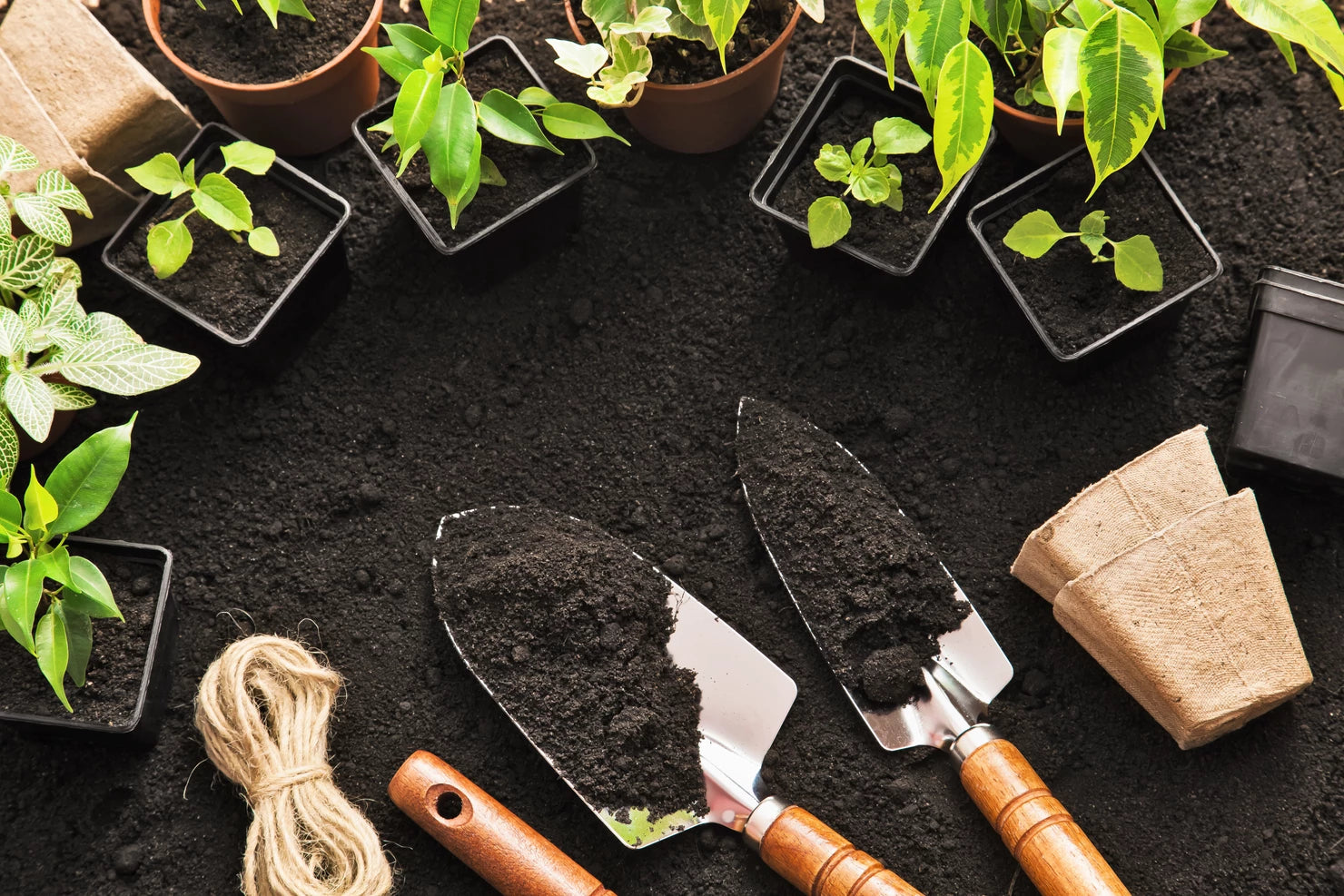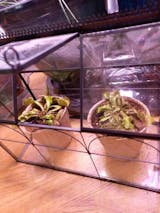Couldn't load pickup availability
Venus Fly Trap – Nature’s Most Thrilling Houseplant
Venus Fly Trap, scientifically known as Dionaea muscipula, is one of the most fascinating carnivorous plants you can grow at home. Its snap traps close in seconds when triggered, turning plant care into a tiny, thrilling spectacle.
Why You'll Love Venus Fly Trap
🌱 A living insect catcher that keeps pests under control naturally
✨ Unique, interactive plant that sparks curiosity
🪴 Compact and easy to display on windowsills or desks
🌿 A conversation starter for plant lovers and kids alike
Order Yours TodayCommon Names
- Venus Fly Trap
- Dionaea muscipula
- Flycatcher Plant
- Snap Trap Plant
Botanical Classification
- Kingdom: Plantae
- Order: Caryophyllales
- Family: Droseraceae
- Genus: Dionaea
- Species: Dionaea muscipula
Native Habitat
Native to subtropical wetlands of North and South Carolina, Venus Fly Traps thrive in nutrient poor, sandy peat soils where they evolved to trap insects for nutrition. They love bright light, high humidity, and clean water.
Why It’s So Popular
- One of the most iconic carnivorous plants
- Interactive and fascinating for all ages
- Easy to grow with the right water and light
- Doubles as natural pest control
Description
Appearance
The plant forms a rosette of green leaves, each ending in a trap lined with hair like trigger sensors. The traps are edged with tooth like cilia that interlock when closed, creating a cage like effect.
Growth Habit
Venus Fly Traps stay small, typically under 5 inches across. They produce new traps throughout the growing season and go dormant in winter, returning stronger in spring.
Popular Plant Varieties
Ficus Shivereana Moonshine
- Known for its light green leaves with creamy variegation.
Tillandsia Xerographica
- Air plant with silvery leaves, perfect for terrariums.
Aglaonema Red Army
- Vibrant red and green foliage ideal for indoor decor.
Calathea Freddie
- Known for striped green leaves that thrive in low light.
Nepenthes Pitcher Plant
- A trailing plant with round, waxy leaves, perfect for hanging baskets.
Dealing with Pests
Venus Fly Traps are fairly pest resistant, but keep an eye out for aphids, spider mites, and fungus gnats. Rinse leaves gently or use a mild insecticidal soap if needed.
Frequently Asked Questions
How much light does a Venus Fly Trap need
At least 4 to 6 hours of direct sunlight daily or strong grow lights indoors.
How should I water it
Use distilled, rain, or reverse osmosis water. Keep the soil consistently damp but not waterlogged.
Does it go dormant
Yes. In winter, it slows growth and may lose some traps. Keep it cool and lightly moist until spring.
Can I trigger the traps for fun
Try not to. Each trap only closes a few times before dying back. Let the plant use its energy on real prey.
What soil works best
A mix of sphagnum peat moss and perlite or sand, with no added fertilizer.
Learn More About Carnivorous Plant Care
Want tips for keeping your Venus Fly Trap thriving. Visit our Carnivorous Plant Care Guide.
Bring Home a Living Wonder
Add a Venus Fly Trap to your collection and watch nature's tiny drama unfold right on your windowsill.
Shop NowHow to take care of Venus Fly Trap
Sun: Indirect
Sun: Indirect
Light: Medium - Bright
Light: Medium - Bright
Water: Keep Mostly Moist
Water: Keep Mostly Moist
Humidity: High
Humidity: High
Pet Friendly: Yes
Pet Friendly: Yes
Pro Tip
Pro Tip
Delivery Policy for Plant Condition
Delivery Policy for Plant Condition
"I have only received part of my order. What to do?
No worries if you've only got part of your order! Our plants come from different nurseries and might arrive in separate shipments, typically 1-2 days apart. It's all part of ensuring your green friends reach you in top-notch condition!
If you do not receive the remaining packages within 48 hours contact support at info@mygreenscape.ca
What is the Life Time Support?
Absolutely! Lifetime support means you can count on us whenever you have questions or uncertainties about your plant. Whether you're puzzled by its behavior or just want to ensure it's thriving, we're here for you. Connect with us on Instagram @mygreenscapeto or shoot us an email at support@mygreenscape.ca.
When it comes to our guarantee for plants shipped with standard or express, rest assured that we offer a 30-day happy healthy plant guarantee on all such shipments. This ensures that your plants are covered for 30 days after delivery, giving you peace of mind regarding their condition. If you have any concerns within this period, feel free to reach out to us for assistance.
For further details, please visit our Local Delivery, Store Pickup, Standard Shipping Guide Page.
What to expect
What to expect
Your plant will arrive in a standard nursery pot, typically 0.5" - 1" smaller than the stated size to seamlessly fit into your chosen decorative pot. Washable Paper Planter Bags are available for separate purchase.
Just like nature intended, each plant is unique, showcasing natural variations in size, shape, and characteristics. Our commitment is to deliver a plant that closely resembles the one featured on our website, matching your chosen size, and with the potential to thrive happily in your home.
Frequently Asked Questions
Frequently Asked Questions
Certainly! If you're pondering about ordering plants online, you're not alone. We've compiled the most frequently asked questions. Check out our FAQ section here for quick answers! Happy planting!
Plant & Pot Size Chart
Plant & Pot Size Chart
Choosing the right pot size for your plants can be a daunting task, especially if you're new to gardening. But fear not! Our pot sizes chart can help you find the perfect match for your plants, ensuring they have enough space to grow and thrive. With our guide, you'll be able to confidently choose the right pot size and plant variety for your gardening needs.
Plant Pot Size Guide.

| Extra Small | 7-10 cm | 2.5 - 3 inches |
| Small | 11-12 cm | 3.5 - 4 inches |
| Medium | 14-17 cm | 5 - 6 inches |
| Large | 19-21 cm | 8 - 10 inches |
| Extra Large | 24-27 cm | 12 - 14 inches |
All sizes are specified in product details.
Your Complete Guide to Pot Sizes: What Size Should You Choose?

When selecting a pot for your plant, it's important to find the right size. But with all the different options out there, how do you know which one is best? We're here to help!
MyGreenscape's pot sizes chart is a great resource for finding your perfect fit. Our easy-to-read chart takes out all the guesswork and helps you quickly choose the right size for your plant.
Smaller pots are best for seedlings or small plants just starting out. These tend to be shallow but wide, allowing enough room for the roots of the young plant but not too much where they get overcrowded. Medium-sized pots are ideal when your plant has grown from its infancy and is ready for more space. These are deeper and wider than small pots, so that it can accommodate larger root systems - making sure your plant gets enough nourishment while still giving it breathing room. Large pots are top choice if you have an established plant in need of lots of space - think trees and large shrubs! The spacious depth and width allow plenty of room for deep root systems without struggling for air or light.
No matter what size you choose, MyGreenscape has got you covered, with our pot sizes chart guaranteeing you find the perfect fit every time!
Winter Shipping Protection
Winter Shipping Protection
We take extra care with each package during the colder months. For destinations experiencing cold weather, we provide insulated packaging and heat packs as needed to protect your plants from freezing temperatures. With Winter Shipping Protection, your plants are equipped to arrive safe and sound, even in winter’s chill.
Care Guide
Care Guide
Explore essential care tips. check out our Comprehensive Resource for Indoor Plant Care.





WATERING MADE EASY
Check soil moisture before watering and use a potting mix that drains well. It’s the secret to healthy, happy plants!
Hear From Happy Plant Parents.
Who have brought Mygreenscape plants into their homes.























